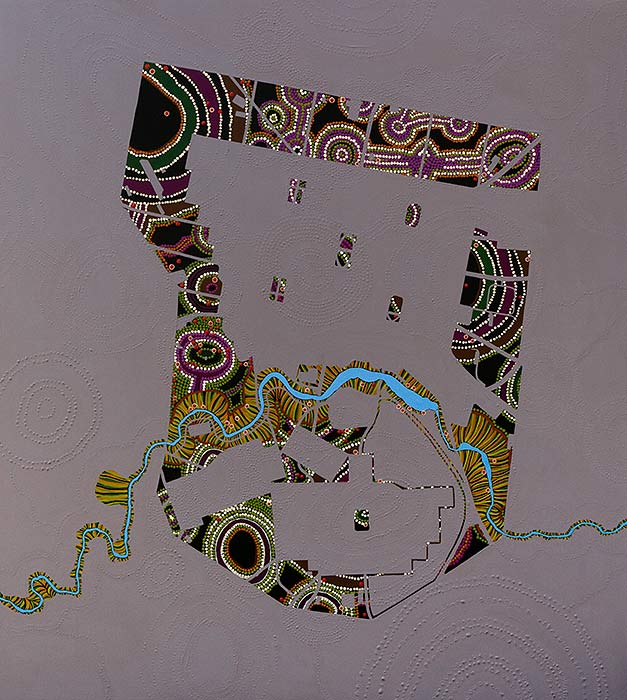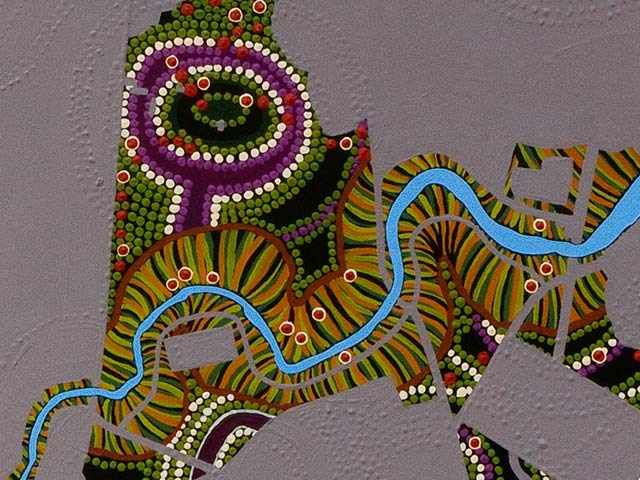90 cm x 100 cm, Acrylic paints on board.
Date produced: November 2015
My understanding of the Adelaide Park Lands is that they were set aside in the 1840s as land to surround the city to be freely available for use by all citizens. Over the years, various projects have encroached on the original intention of the Park Lands.
The River Torrens flows left to right in my painting, towards the sea on the west coast of Adelaide suburbia. The painting has south to the top, rather than north to the top because, to me, the overall shape of the parklands and the flow of the river seemed to work better as an image this way. It also indicates a view that is not the conventional 'Western' cultural view. I started with a Google Map of the city and current Park Lands, and decided to represent the regions of Park Lands that were still freely available for use by all citizens with my own construction of 'Australian Indigenous art' motifs - they are all my own colours, sizes, arrangements, and constructions. The 'Australian Indigenous art' motifs in this image will not make sense in an Australian Indigenous art context - some of the motifs used were based more on remembered paintings from central desert Indigenous groups, not from the groups native to the Adelaide area. The 'Australian Indigenous art' was only intended to represent 'land originally intentioned for use by all people', and the arrangement of the design was done to try to show how the land has been obscured by many various 'developments'. At the time, I was working on the seventh floor of the Jeffrey Smart building in the City West campus of UniSA, and I could look out at Montefiore Hill during my morning tea break and see it as a large shallow cone. I put a large design of concentric rings around Montefiore Hill on my design to indicate this observation, and set out other regions with similar ideas. I added red dots (most surrounded with white rings) over the 'Australian Indigenous art' design to indicate where especially significant trees are located in the Park Lands. I must say that I did enjoy creating and painting the 'Australian Indigenous art' design. I also hope that I have not offended any Australian Indigenous person with my design - that was certainly not my intention.
I then blocked out all the regions that are no longer available (because there are roads, a cemetery, a golf course, Adelaide Oval, buildings, residential areas, tennis courts, railway lines, the parade ground, grandstands, parking lots, etc. that are no longer 'free' areas for all people) with the one grey colour. I liked the idea of having the 'Australian Indigenous art design' extend underneath the grey block out colour (by seeing the embossing of the 'Australian Indigenous art' design), to indicate that all the land was 'free' at one time. On the areas that are no longer freely available to all people, you can no longer see the 'colours' of the underlying 'Australian Indigenous art design', but the design is still there, underneath (just as the original land itself is still there). I like the idea of using physical paint in creating a design with 'embossing' that can be seen underneath a thin layer of even grey paint. This effect is best experienced when you can view the real painting. |





